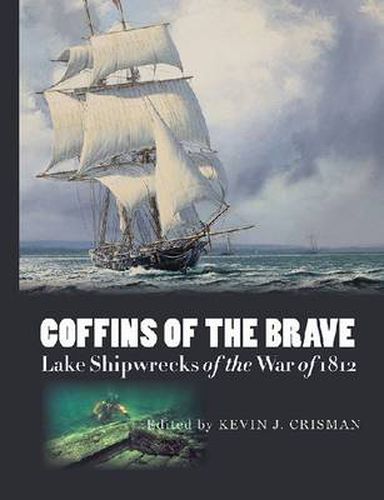Readings Newsletter
Become a Readings Member to make your shopping experience even easier.
Sign in or sign up for free!
You’re not far away from qualifying for FREE standard shipping within Australia
You’ve qualified for FREE standard shipping within Australia
The cart is loading…






In Coffins of the Brave: Lake Shipwrecks of the War of 1812, archaeologist Kevin J. Crisman and his fellow contributors examine sixteen different examples of 1812-era naval and commercial shipbuilding. They range from four small prewar vessels to four 16- or 20-gun brigs, three warships of much greater size, a steamboat hull converted into an armed schooner, two gunboats, and two postwar schooners. Despite their differing degrees of preservation and archaeological study, each vessel reveals something about how its creators sought the best balance of strength, durability, capacity, stability, speed, weatherliness, and seaworthiness for the anticipated naval struggle on the lakes along the US-Canadian border.
The underwater archaeology reported here has guided a new approach to understanding the events of 1812-15, one that blends the evidence in contemporary documents and images with a wealth of details derived from objects lost, discarded, and otherwise left behind.
This heavily illustrated volume balances scholarly findings with lively writing, interjecting the adventure of working on shipwrecks and archaeological finds into the investigation and interpretation of a war that continues to attract interest two centuries after it was fought.
$9.00 standard shipping within Australia
FREE standard shipping within Australia for orders over $100.00
Express & International shipping calculated at checkout
In Coffins of the Brave: Lake Shipwrecks of the War of 1812, archaeologist Kevin J. Crisman and his fellow contributors examine sixteen different examples of 1812-era naval and commercial shipbuilding. They range from four small prewar vessels to four 16- or 20-gun brigs, three warships of much greater size, a steamboat hull converted into an armed schooner, two gunboats, and two postwar schooners. Despite their differing degrees of preservation and archaeological study, each vessel reveals something about how its creators sought the best balance of strength, durability, capacity, stability, speed, weatherliness, and seaworthiness for the anticipated naval struggle on the lakes along the US-Canadian border.
The underwater archaeology reported here has guided a new approach to understanding the events of 1812-15, one that blends the evidence in contemporary documents and images with a wealth of details derived from objects lost, discarded, and otherwise left behind.
This heavily illustrated volume balances scholarly findings with lively writing, interjecting the adventure of working on shipwrecks and archaeological finds into the investigation and interpretation of a war that continues to attract interest two centuries after it was fought.